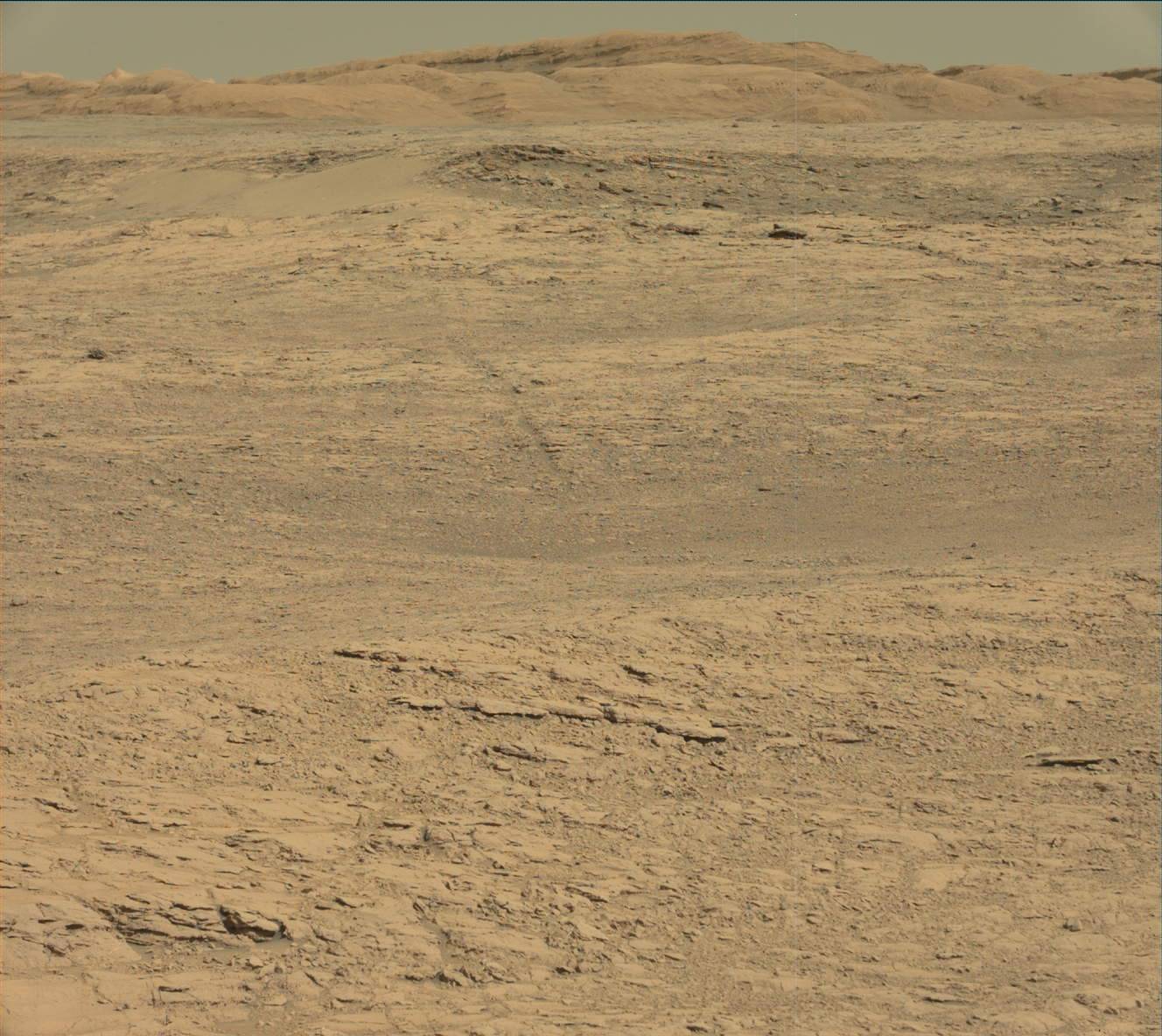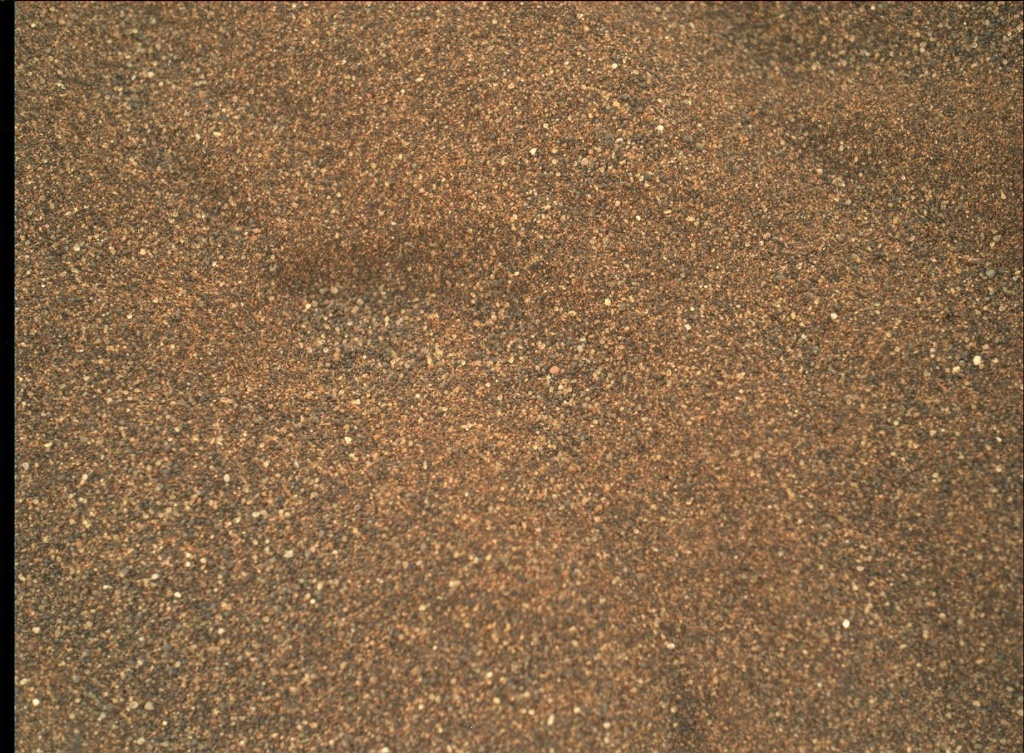October 17, 2017
Sols 1848-1849: How far we've come
Today felt like any other planning day: a straightforward plan involving remote sensing, a drive, post-drive imaging, and some untargeted observations on the second sol. Just a typical day in the office. Maybe even an easy one. It wasn't until I sat down to write this blog that I fully processed how far we've come and just how awesome Curiosity's "office" is. I was looking through the drive imagery and came across this Navcam frame (posted above), which looks down on the Murray Buttes and Bagnold Dune Field, across Aeolis Palus and the northern rim of Gale crater. It's pretty spectacular to see just how much we've explored in 5 years. But that was just a quick glance over Curiosity's shoulder (or the RTG, which hangs off the back of the rover), because our sights were mostly set on the terrain ahead of us to choose where to go next.
I was the Geology Science Theme Lead today, and it felt like any other planning day. We came in to assess how the weekend activities completed, what targets we had in front of us, and which route we wanted to take to get to the next interesting feature on Vera Rubin Ridge. The two-sol plan begins with a preload test of the rover's drill. Then Curiosity will acquire ChemCam and Mastcam observations of some nodular purple bedrock (target "Buck Reef"), and a unique gray-white vein or clast (target "Boomplaas"). We also planned some Mastcam imaging of sedimentary structures exposed in cross-section (target "Eccles") and to document the previously-acquired ChemCam AEGIS target. Then Curiosity will drive ~15-20 m further south to investigate some mottled outcrop that we first noticed from orbit. After the drive, we'll take Mastcam and Navcam images to prepare for contact science in the next plan. Data volume was a challenge today, so we had to think carefully about which images we need to have down in time to make decisions on Wednesday. On the second sol, Curiosity will wake up early to acquire a number of environmental monitoring observations to monitor clouds, dust, and wind. Later on the second sol we planned another ChemCam AEGIS observation to automatically target bedrock in our new location. Not bad for a typical day in the office!



